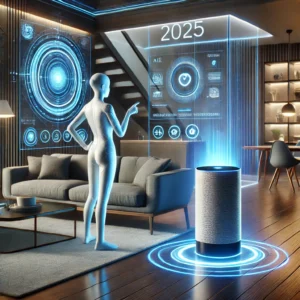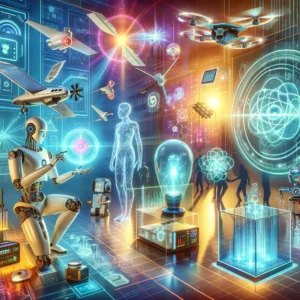How Edge AI is Transforming the Internet of Things (IoT)

How Edge AI is Transforming the Internet of Things (IoT).
Discover how Edge AI is revolutionizing the Internet of Things (IoT). Learn about its benefits, applications, and future trends to stay ahead in tech innovation.
The rise of Edge AI is revolutionizing the Internet of Things (IoT), enabling faster, smarter, and more efficient devices. By processing data closer to the source, Edge AI minimizes latency, reduces bandwidth costs, and enhances security. This innovation is unlocking new possibilities across industries, from smart homes to autonomous vehicles.
—
What Is Edge AI?
Edge AI refers to artificial intelligence that processes data on edge devices rather than relying entirely on cloud computing. These devices include IoT gadgets like sensors, smart cameras, and wearables, equipped with AI algorithms that analyze data locally.
—
Benefits of Edge AI in IoT
1. Reduced Latency
One of the biggest challenges with traditional cloud-based IoT systems is latency. Edge AI eliminates the need to send data to remote servers for processing, enabling real-time decision-making.
Example: Autonomous vehicles rely on Edge AI to process sensor data instantly, ensuring safe navigation and collision avoidance.
2. Enhanced Data Privacy
Since data processing occurs locally, Edge AI minimizes the risk of data breaches. Sensitive information stays on the device, offering greater privacy.
Example: Smart home security systems use Edge AI to analyze video feeds without uploading them to the cloud, protecting user privacy.
3. Cost Efficiency
By reducing the volume of data sent to the cloud, Edge AI lowers bandwidth costs and alleviates network congestion.
Example: Industrial IoT devices optimize energy consumption by processing data locally, reducing operational expenses.
4. Scalability
Edge AI enables the seamless integration of more devices into IoT ecosystems without overwhelming centralized systems.
Example: In healthcare, wearable devices with Edge AI monitor patients’ vitals in real time, supporting large-scale deployment in hospitals.
READ ALSO: The Impact of Tech on Traditional Education Systems.
—
Applications of Edge AI in IoT
1. Smart Homes
Edge AI powers smart home devices such as thermostats, lighting systems, and security cameras, enhancing automation and personalization.
Smart thermostats learn user preferences and adjust temperatures accordingly.
Security cameras identify unusual activities and alert homeowners instantly.
—
2. Healthcare
In healthcare, Edge AI is transforming patient care through remote monitoring, early diagnosis, and personalized treatment.
Wearables track vital signs and alert doctors about irregularities.
AI-driven diagnostic tools analyze medical images on-site, speeding up diagnosis.
Alt Tag: A healthcare wearable device using Edge AI for real-time patient monitoring.
—
3. Autonomous Vehicles
Self-driving cars rely heavily on Edge AI to process massive amounts of data from sensors and cameras, ensuring safety and efficiency.
Real-time object detection and route optimization improve navigation.
AI systems analyze traffic patterns to reduce travel time.
—
4. Industrial IoT (IIoT)
Edge AI enhances manufacturing, energy, and logistics industries by enabling predictive maintenance and improving operational efficiency.
Sensors detect machinery issues before failures occur.
AI algorithms optimize energy use, reducing waste and costs.
—
5. Retail
Retailers leverage Edge AI to improve customer experiences and streamline operations.
AI-driven cameras analyze foot traffic to optimize store layouts.
Inventory systems predict stock levels and prevent shortages.
—
Challenges of Edge AI in IoT
Despite its benefits, Edge AI faces several challenges:
Limited Processing Power: Edge devices have restricted computational capabilities compared to cloud systems.
High Development Costs: Designing AI algorithms for edge devices requires significant investment.
Interoperability Issues: Integrating Edge AI into existing IoT ecosystems can be complex.
—
Future of Edge AI and IoT
The integration of Edge AI and IoT is set to redefine technology. Emerging trends include:
1. 5G Connectivity: Combining 5G with Edge AI will enhance data transfer speeds and reduce latency further.
2. Edge AI Chips: Innovations in hardware, such as NVIDIA’s Jetson series, are making edge computing more accessible.
3. Sustainability: Edge AI supports eco-friendly initiatives by reducing energy consumption in IoT systems.
—
Conclusion
Edge AI is transforming the IoT landscape by enabling faster, safer, and more efficient devices. From smart homes to autonomous vehicles, its applications are endless. By addressing current challenges and leveraging emerging trends, Edge AI will continue to unlock new possibilities in technology.




